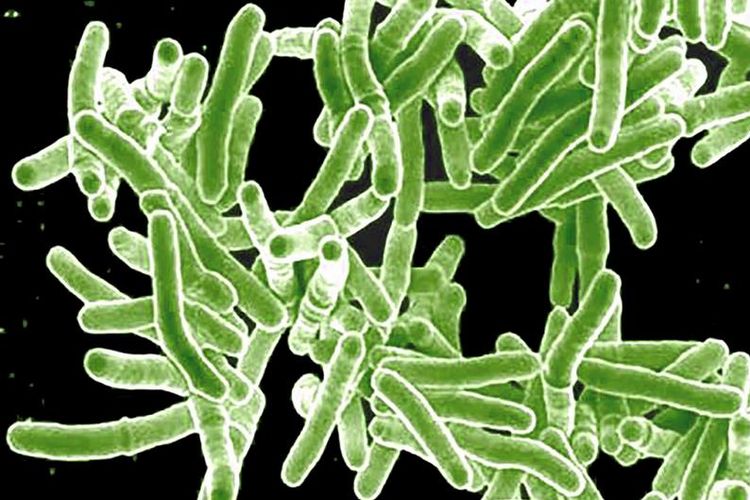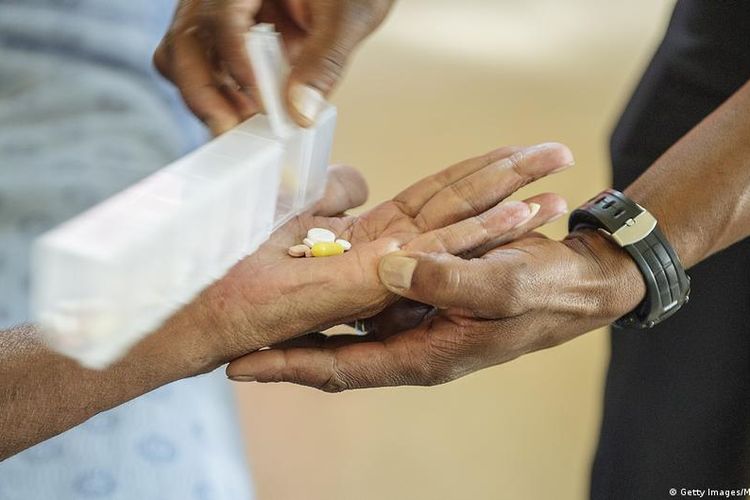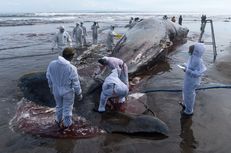
KOMPAS.com - In 2010, Phumeza Tisile, then a first-year student at Cape Town University in South Africa, noticed that she couldn't climb the stairs easily like other students. She would become tired quickly and had lost a lot of weight.
"That's when I saw that there was something wrong," Tisile told DW. "But I never thought that it might be TB."
After other diseases were ruled out, a chest X-ray revealed that Tisile did have tuberculosis (TB), and her journey to recovery — a feat that would take three years and eight months — began.
Also read: Asian Frontline Medics in US Face Hate Amid Covid-19
Despite being a preventable and curable disease, TB killed 1.4 million people in 2019, according to the World Health Organization (WHO), making it the world's most infectious disease killer, ahead of both HIV and malaria.
About half of all people with TB can be found in eight countries in the Global South, but TB cases still occur in most countries.
On March 4, 2021, the German city of Krefeld announced that a 17-year-old student had died from TB.
In 2019, there were 4,791 cases of TB in Germany and 129 people died from the disease, according to the Robert Koch Institute, a Germany government agency responsible for disease control and prevention.
 Mycobacterium tuberculosis is the bacteria that causes tuberculosis
Mycobacterium tuberculosis is the bacteria that causes tuberculosisWhat is TB?
TB is caused by the bacteria Mycobacterium tuberculosis and usually affects the lungs, but it can be located in other parts of the body, too. It is spread through the air when people with active TB in their lungs cough, sneeze or spit.
It is not spread by sharing eating utensils, shaking hands, hugging, touching bed linen or toilet seats, sex, or sharing saliva when kissing someone. Symptoms include a cough, chest pain, fatigue, fever and weight loss.
Also read: Indonesia to Ban New Year's Celebration in Public Places
Close or long-term contact is usually required for someone to become infected. About one-quarter of the world’s population is estimated to be infected with TB bacteria, according to the WHO, and only 5% to 15% of these people develop active TB disease.
Most people who have had treatment for a few weeks are no longer contagious.
Overcrowded homes and spaces, malnutrition, HIV, substance abuse and diabetes are some of the risk factors for TB. People can also have a latent TB infection that might become active even years later when their immune system is weak.
COVID-19 erases years of TB progress
Though scientists have worked around the clock to develop vaccines for Sars-CoV-2, there is only one effective vaccine for TB, Bacille Calmette-Guerin (BCG). It was first tested on humans in 1921. The BCG vaccine is quite effective in children but doesn't work very well for adults.
Scientists recently developed another vaccine based on BCG. Once the vaccine has successfully completed clinical testing, there are plans to use it against tuberculosis worldwide within the next few years.
An estimated 1.4 million fewer people received care for TB in 2020 than in 2019, the WHO announced on Tuesday, citing preliminary data from more than 80 countries.
The countries with the biggest relative gaps were Indonesia (42% fewer TB patients received care), South Africa (41%), the Philippines (37%) and India (25%).
The WHO said that it feared more than half a million more people may have died from TB in 2020 because they were unable to obtain a diagnosis.
WHO Director-General Tedros Adhanom Ghebreyesus said that the effects of COVID-19 go far beyond the death and disease caused by the virus itself.
Also read: Migrant Worker Buried in Malaysia As Family Had No Money to Bring Her Body Home to Indonesia
"The disruption to essential services for people with TB is just one tragic example of the ways the pandemic is disproportionately affecting some of the world's poorest people, who were already at higher risk for TB," Ghebreyesus said.
Earlier in March, Stop TB Partnership, a group of organizations working to end TB, published research that stated 12 months of COVID had erased 12 years of progress in the fight against TB.
Data from nine countries representing 60% of the global TB burden saw large declines in diagnosis and treatment of TB infections in 2020, ranging from 16% to 41%.
This brought the overall number of people diagnosed and treated for TB in those countries to 2008 levels, the Stop TB Partnership said.
Data emerging from India and South Africa also shows that people coinfected with TB and COVID-19 have a mortality rate that is three times higher than for people infected with TB alone, the organization said.
 Khan: Access to TB medication needs to be improved
Khan: Access to TB medication needs to be improvedUzma Khan, a clinician and medical director at IRD Global, a health research organization, is currently working on a multi-country clinical trial focusing on multi-drug-resistant TB treatment regimens that are shorter, more effective and less toxic.
Khan told DW that the fight against TB has been undermined due to diseases considered more of a priority, such as COVID-19.
A long path to recovery
TB is curable but treatment is long, can have harsh side effects and involves multiple medications that have to be taken every day for the full course of treatment — even if the patient is feeling better.
The disease comes in several forms. Regular TB takes about six months of treatment to cure.
If someone stops taking their medication mid-course they can develop MDR-TB, which needs different, potentially more toxic drugs and requires 12-24 months of treatment depending on the strain.
You can also catch MDR-TB from an infected person. Extensively drug-resistant TB is a rare type of MDR-TB.
After seeing no improvement on regular TB drugs, Tisile, the South African student, started MDR-TB treatment and received pills and an injection daily.
Four months of MDR-TB treatment left her deaf in both ears — a side effect of the injectable drug kanamycin, which is no longer recommended for use in treatment.
About a year after her first symptoms, she was finally diagnosed with extensively drug-resistant TB, the deadliest form of the disease. Tisile was told she had a 20% chance of surviving.
 Phumeza Tisile survived extensively drug-resistant TB. Now she is a a TB advocate.
Phumeza Tisile survived extensively drug-resistant TB. Now she is a a TB advocate.But she beat the odds. After receiving two cochlear implants that allowed her to hear, Tisile returned to her studies. She graduated from Cape Town University at the end of 2020 with a degree in social sciences.
Now she is a TB advocate campaigning for less toxic treatments and educating people about the disease.
Access to treatment for the more complex cases of TB is another problem. A patient with regular TB can have someone at home go to the local clinic every day to pick up their medication for them.
But access to MDR-TB treatment varies depending on the country, Khan said.
"For MDR-TB it's a different story altogether. There is still a very centralized function in terms of care delivery — you still have patients coming long distances to centers in order to access treatment, access laboratory tests and having to pay for costs as well," said Khan.
Letting go of shame
When Tisile was in the TB hospital she didn't experience any discrimination, but when she went to the general hospital wearing a mask, she was treated differently.
"You could tell that other people are against you without even saying a word," Tisile said.
Working with TB patients also puts health-care workers at risk of infection. Khan was recently cured of ocular TB, a rare form of TB found outside of the lungs.
Going through the treatment has helped her understand what the TB patients she works with go through. She took medication every day for a year, which caused moderate pain in her joints.
Also read: President Jokowi Warns About Continuing Danger of TB to Indonesia
The lessons learned from COVID can be applied to TB, said Tisile, especially when it comes to mask wearing.
"Patients who had TB were so embarrassed to wear masks in clinics and hospitals because they were so afraid of being judged and stigmatized," Tisile said.
She believes that people should not be ashamed of having TB and that everyone who speaks up makes it easier for the next person.
"I still don't get the part where people see TB as not such an important disease," said Tisile. "I know it's been labeled as a 'poor man's disease’ but the fact remains that anyone who breathes, anyone who's alive, can actually get TB."
Simak breaking news dan berita pilihan kami langsung di ponselmu. Pilih saluran andalanmu akses berita Kompas.com WhatsApp Channel : https://www.whatsapp.com/channel/0029VaFPbedBPzjZrk13HO3D. Pastikan kamu sudah install aplikasi WhatsApp ya.































